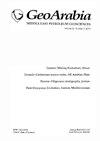伊朗扎格罗斯中纬度大兰盆地中二叠统(瓜达鲁普统)褐藻属生物地层学分类及其在古气候动力学和古地理中的应用
引用次数: 29
摘要
中上二叠世(瓜达鲁普—洛平纪)大兰盆地位于中纬度新特提斯洋,是沿阿拉伯板块被动边缘的一个非常大的碳酸盐岩斜坡/台地的一部分。如现代世界所示,中纬度地区是气候波动和气候变化速度最显著的地区。因此,有孔虫多样性最显著的变化发生在高纬度地区,正如中二叠世(瓜达卢普)有孔虫记录所指出的那样。黄斑虫是一种大型的温水有孔虫,对水温非常敏感。具有共生生物的近代暖水底栖有孔虫的最佳水温为20-30℃,而下限为14-16℃。在扎格罗斯及其周边地区,可以区分出三种由气候决定的组合。第一个组合是温带、冷水环境的特征,包含没有共生体的小型有孔虫,它们对这种环境具有抵抗力。Fusulinid staffelids, schubertellids, Chusenella, eopolpolydiexodina和Monodiexodina可以在温暖的水环境中发现,在第二次气候组合中,从温带状态过渡到温水状态。第三个组合的特点是在Zagros的温水条件下存在verbeekinids,并且出现在地表水温度超过约25°C的地方。新特提斯的气候波动和古地理模型是基于对镰刀菌的时空分布的分析。同时,本地区首次发现温带冷水单双地目生物。描述了三种新的镰刀菌属植物。本文章由计算机程序翻译,如有差异,请以英文原文为准。
Middle Permian (Guadalupian) fusulinid taxonomy and biostratigraphy of the mid-latitude Dalan Basin, Zagros, Iran and their applications in paleoclimate dynamics and paleogeography
The Middle–Upper Permian (Guadalupian–Lopingian) Dalan Basin was part of a very large carbonate ramp/platform along the passive margin of the Arabian Plate, located at mid-latitude Neo-Tethys Ocean. As shown in the modern world the mid-latitudes are areas where climatic fluctuations and velocity of climate change are most significant. Consequently, the most significant variations in foraminiferal diversity occur at higher latitudes as already noted for the Middle Permian (Guadalupian) foraminifers’ record. The fusulinids as a large, warm-water foraminifera were quite sensitive to water temperature. The optimal water temperature for recent warm-water benthic foraminifera with living symbionts, and consequently for fusulinids, is 20–30°C, while the lower limit is 14–16°C. Three climatically-determined assemblages were distinguished in Zagros and the surrounding areas. The first assemblage is characteristic of temperate, cool-water environments and contains smaller foraminifera with no symbionts, which possess resistance to such environments. Fusulinid staffellids, schubertellids, Chusenella, Eopolydiexodina and Monodiexodina can be found in the warmer water environments in a second climatic assemblage, transitional from temperate- to warm-water state. The third assemblage is characterized by the presence of verbeekinids in warm-water conditions in Zagros and appeared where surface-water temperature exceeded approximately 25°C. The proposed model of climate fluctuations and paleogeography in the Neo-Tethys is based on analyses of temporal and spatial distribution of fusulinids. Also, a temperate cool-water Monodiexodina is recorded in this area for the first time. Three new species of fusulinids are described.
求助全文
通过发布文献求助,成功后即可免费获取论文全文。
去求助
来源期刊

Geoarabia
地学-地球科学综合
自引率
0.00%
发文量
0
审稿时长
>12 weeks
期刊介绍:
Cessation. Published from 1996 to 2015, GeoArabia, The Journal of the Middle Eastern Geosciences was a quarterly journal covering the petroleum geosciences in the Middle East. The journal covers subjects such as: - sedimentology - tectonics - geophysics - petroleum reservoir characterization
 求助内容:
求助内容: 应助结果提醒方式:
应助结果提醒方式:


